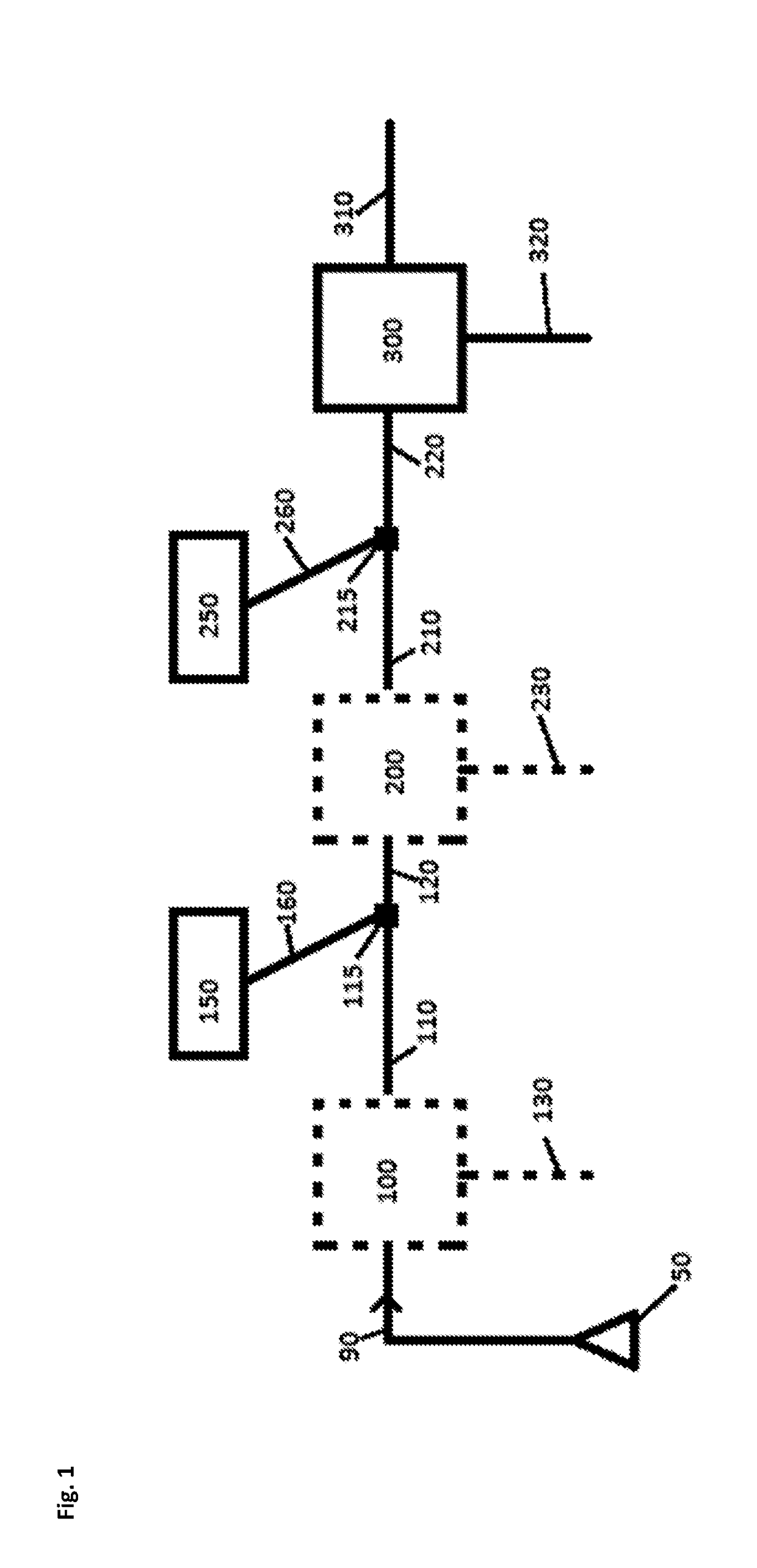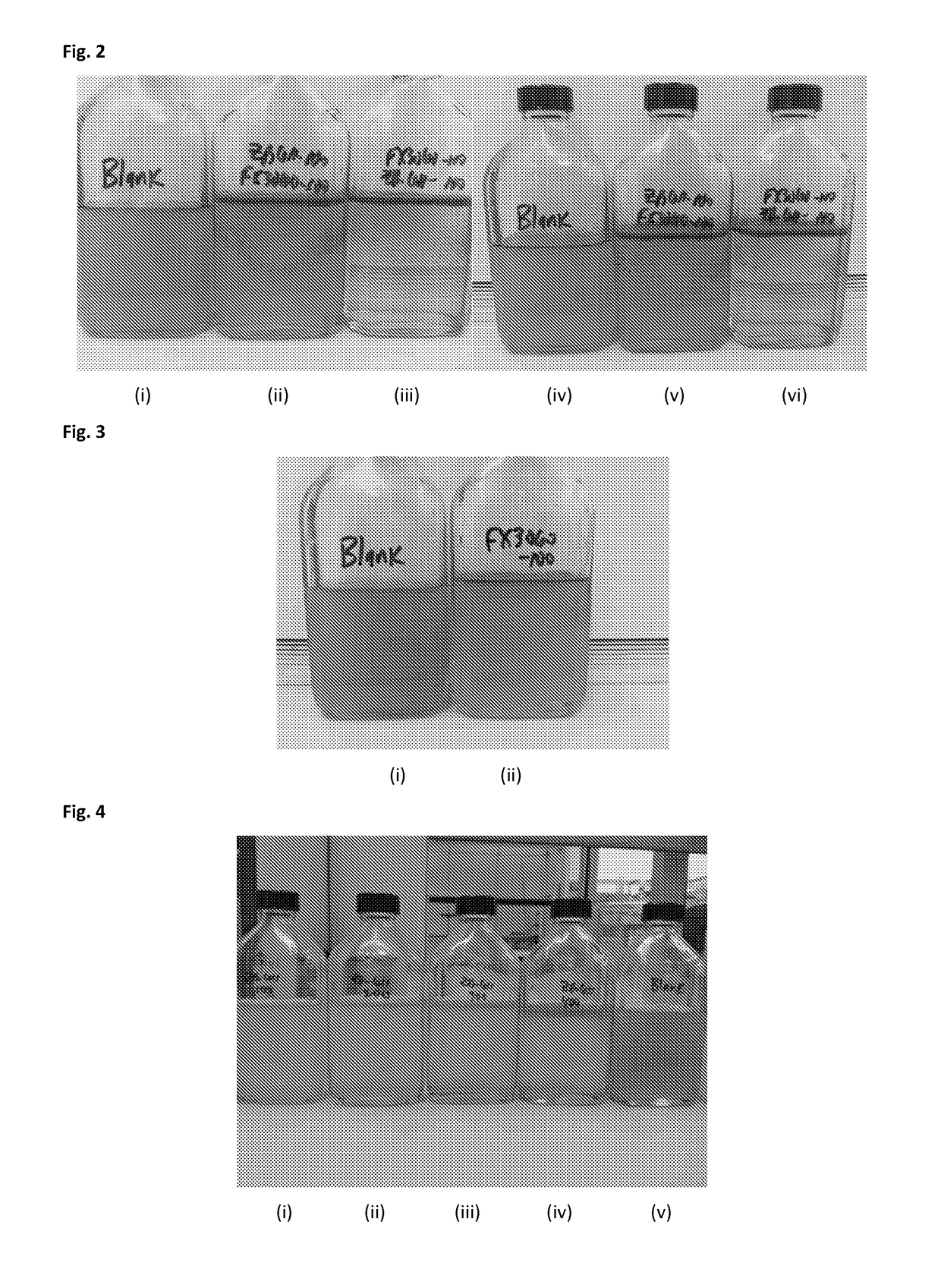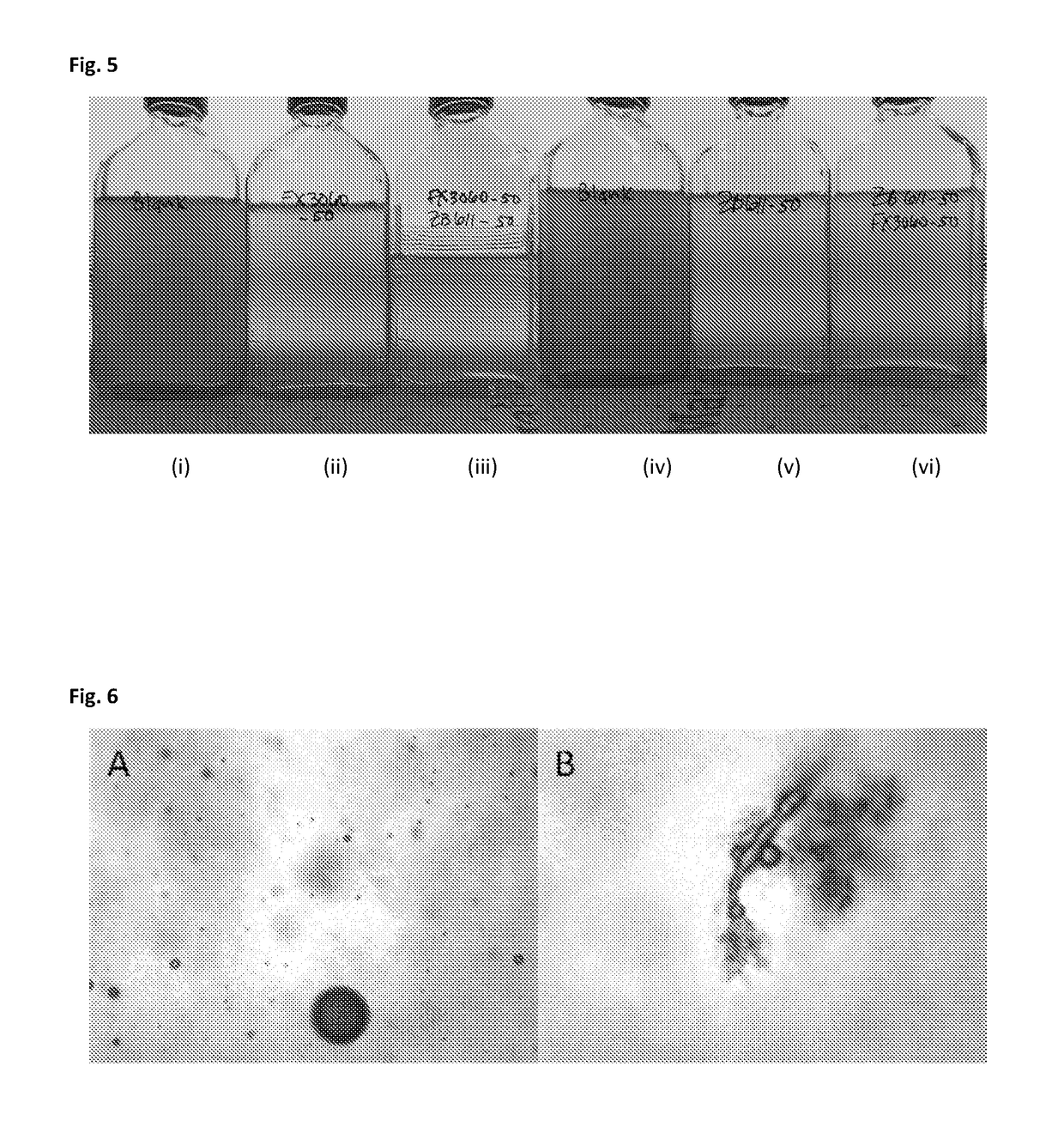Process for the treatment of produced water from chemical enhanced oil recovery
a technology of enhanced oil recovery and production well, which is applied in the direction of quarries waste water treatment, chemistry apparatus and processes, and borehole/well accessories, etc., can solve the problems of affecting water is difficult to treat, and oil is difficult to separate from the fluid extracted. , to achieve the effect of improving the operation of the hydrocyclon
- Summary
- Abstract
- Description
- Claims
- Application Information
AI Technical Summary
Benefits of technology
Problems solved by technology
Method used
Image
Examples
example 1
[0137]A brine solution was prepared to mimic North Sea produced water as follows:
Na30314.0mg / LCa3924.0mg / LMg622.0mg / LK513.0mg / LSr672.0mg / LCl56618.0mg / LpH:7.20
[0138]Oil content: 2000 ppm obtained from the Skarv oil field, sampled from first stage separator. CEOR anionic polymer content: 2000 ppm, dry, anionic flocculant with 30% charge density. The anionic polymer was mixed into the synthetic brine using an Ultra Turrax homogenizer (IKA-Werke GmbH & Co. KG, Staufen, Germany) for 30 minutes at 20,000 rpm. After the polymer was completely dissolved in the brine, the oil was added and mixed for an additional 5 minutes to ensure a stable emulsion. Both the first and second reagents were added as 1 wt. % solutions.
[0139]Test Protocol: An appropriate amount of the prepared synthetic emulsion was added to a prescription bottle and the bottle was shaken to ensure homogeneity. The required amount of the first reagent was then added; the bottle was capped and shook 50 times to simulate medium ...
example 2
[0142]A brine solution was prepared to mimic North Sea produced water as follows:
Na30314.0mg / LCa3924.0mg / LMg622.0mg / LK513.0mg / LSr672.0mg / LCl56618.0mg / LpH:7.20
[0143]Oil content: 2000 ppm obtained from the Skarv oil field, sampled from first stage separator. CEOR anionic polymer content: 2000 ppm, dry, anionic flocculant with 30% charge density. The anionic polymer was mixed into the synthetic brine using an Ultra Turrax homogenizer for 30 minutes at 20,000 rpm. After the polymer was completely dissolved in the brine, the oil was added and mixed for an additional 5 minutes to ensure a stable emulsion.
[0144]The first and second reagents were added to provide 50 ppm of each reagent in the synthetic emulsion.
[0145]The synthetic emulsion was placed into the reservoir of a bench top WEMCO® floatation device to determine how effective flotation is in clarifying the water. The first reagent was added and the WEMCO was started and set at the desired rotational speed. The treated emulsion was ...
example 3
[0148]A brine solution was prepared to mimic North Sea Produced Water as follows:
Chloride13240mg / lSulphate1195mg / lCalcium206mg / lStrontium3.6mg / lMagnesium562mg / lSodium7726mg / lPotassium218mg / l
[0149]Sample preparation: A mixture of 20% oil from the Foinaven field and 80% brine water along with 100 ppm polymer (liquid anionic flocculant with 30% charge density) was placed into a beaker. The beaker was heated to 70° C. and after the beaker reached the target temperature, the mixture was sheared using an Ultra Turrax homogenizer for one minute at 20,000 rpm. After the shearing step, the mixture was placed into a 2000 mL separator funnel where the mixture was allowed to separate for seven and a half minutes. After the separation time, the water portion was collected and tested using a jar tester with a DAF simulation apparatus to determine the effectiveness of the chemical treatment both alone and with mechanical assistance. The oil in water concentration and d50 droplet size were measured...
PUM
| Property | Measurement | Unit |
|---|---|---|
| time | aaaaa | aaaaa |
| diameter | aaaaa | aaaaa |
| temperature | aaaaa | aaaaa |
Abstract
Description
Claims
Application Information
 Login to View More
Login to View More - R&D
- Intellectual Property
- Life Sciences
- Materials
- Tech Scout
- Unparalleled Data Quality
- Higher Quality Content
- 60% Fewer Hallucinations
Browse by: Latest US Patents, China's latest patents, Technical Efficacy Thesaurus, Application Domain, Technology Topic, Popular Technical Reports.
© 2025 PatSnap. All rights reserved.Legal|Privacy policy|Modern Slavery Act Transparency Statement|Sitemap|About US| Contact US: help@patsnap.com



